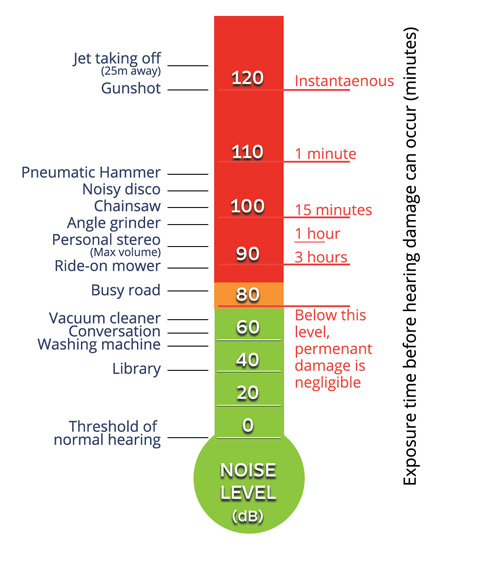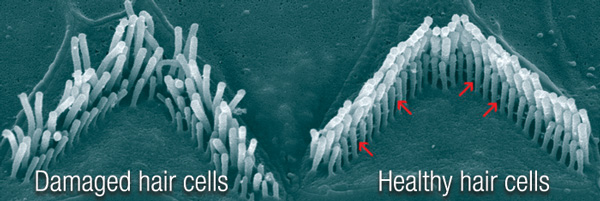Tweed Heads +61 7 5513-0338
Mt Ommaney +61 449 950 048
Runaway Bay +61 7 5529-3530
Hyperdome +61 7 5439-0809
Victoria Point +61 7 3207-6247
Mon-Fri, 9AM – 5:30PM
Hearing Loss
An estimated 3.5 million Australians live with hearing difficulties, making it hard to follow conversations — particularly in social and noisy settings such as restaurants, cafés, and family gatherings.
Why is hearing loss a serious health condition?
More than 100 years ago, Helen Keller, who was deaf and blind, described the isolation caused by hearing loss aptly when she contended that:
 “Sight connects people to things... Hearing connects people to people.”
“Sight connects people to things... Hearing connects people to people.”
As hearing loss progresses gradually over time, it can be hard to read the signs. Initially, it may be family members or friends who notice the hearing difficulties.
Left untreated, sufferers will increasingly become isolated, frustrated, and earning lower incomes due to decreased effectiveness in the workplace. It also leads to increased risk of serious health issues, including depression, decline in memory and concentration, and even early onset dementia.
Conversely, when people take the steps to address their difficulties, and do this as early as possible, they are able to fully enjoy the sounds that really matter – conversations, music, nature and laughter.

Signs of hearing loss
Hearing loss usually affects different frequencies of sound by varying amounts. This can lead to conversations being difficult to follow.
If you feel that your hearing is not what it used to be, or are concerned that a loved one may be experiencing hearing loss, take a moment to complete the 1-minute hearing check here.
Types of hearing loss
There are three forms of hearing loss: conductive, sensorineural, and mixed hearing loss.
Conductive hearing loss
This loss results from a problem with the passage of sound through the outer ear and/or middle ear. Some common examples include
- Excessive cerumen (earwax) in the ear canal
- Perforation of the eardrum
- Middle ear infection with fluid build-up
However, conductive hearing loss accounts for only 10% of all hearing losses, and they range from mild to moderate in severity. Conductive hearing loss can often be medically treated, and in some cases, hearing can be completely restored.
Sensorineural hearing loss
Also known as “nerve deafness”, this is the most common type of hearing loss and originates in the inner ear. Common causes include:
- Genetic factors (hearing loss can run in families)
- Excessive noise exposure – either sudden or prolonged
- Changes in the inner ear due to ageing
Less common causes include:
- Reactions to ear-toxic medications
- Acoustic neuroma (a benign tumor that can develop on the cochlear nerve)
- Conditions acquired prior to birth (congenital)
- Infections such as meningitis and mumps
- Kidney disease
- Vascular disease
Each cause can lead to damage to the sensory hair cells or nerves. Once damaged, the hair cells can’t repair themselves or be medically treated. Therefore, 90% of cases of sensorineural hearing loss cannot be reversed. In more than 95% of cases involving sensorineural hearing loss, hearing aids are the recommended course of treatment.
Mixed hearing loss
When hearing loss occurs from a condition in the inner ear as well as the outer and/or middle ear, this is known as “mixed hearing loss”. An example of mixed hearing loss may be someone with inner-ear damage due to exposure to noise in his or her workplace over many years, who also currently has an infection that has led to a fluid build-up in the middle ear.
Causes of hearing loss
 While the aging process is a major contributor to hearing loss, it is certainly not a condition reserved for the later stages of life. Studies have shown that exposure to noise is thought to be a contributing factor in around 34% of cases – and interestingly, around 50% of Australians with hearing loss are still of traditional working age (i.e. under 65 years).
While the aging process is a major contributor to hearing loss, it is certainly not a condition reserved for the later stages of life. Studies have shown that exposure to noise is thought to be a contributing factor in around 34% of cases – and interestingly, around 50% of Australians with hearing loss are still of traditional working age (i.e. under 65 years).
Other factors contributing to hearing loss can be viewed in the chart shown here.
Noise-induced hearing loss
Given the impact of noise in traditionally male-dominated fields such as factories, military service and construction, American males are considerably more likely to have hearing loss than women – including being twice as likely to have a moderate to severe hearing loss.
These days, people are more aware of the damage that noise can do to their hearing. This is illustrated through the mandatory provision of ear protection on work sites and in factories.
Nevertheless, every day, millions of Australians are exposing themselves to noise levels that will surely lead to long-term damage to their hearing, including the use of personal stereo systems by the youth of the nation.

+ Why can I hear low-pitched sounds better than high-pitched sounds?
High  sounds (e.g power tools) ‘excite’ receptor cells near the opening of the cochlea, while low frequency sounds stimulate cells towards the end of the cochlea.
sounds (e.g power tools) ‘excite’ receptor cells near the opening of the cochlea, while low frequency sounds stimulate cells towards the end of the cochlea.
Over time, the high-frequency hair cell receptors are subject to more of the incoming pressure waves of the fluid inside the cochlea.
This means they are more prone to long-term damage than the low-frequency hair cell receptors, which are more protected further up the cochlea.
Request an appointment today!
Australian Audiology Services are here for all of your hearing care needs. Call us today on 1300 864 327, or complete the form below. One of our team will will be in touch as soon as possible to answer your questions, or to schedule an appointment at one of our hearing centres.

